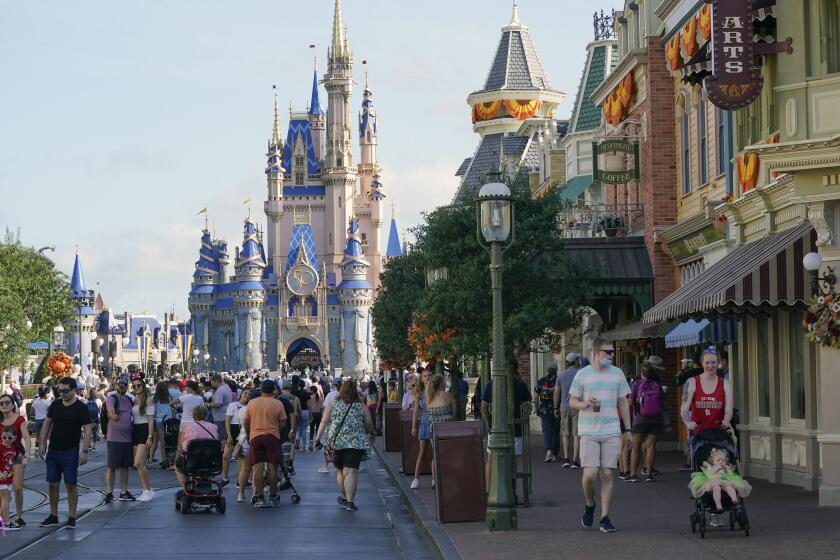Heading to a Disney theme park? More attendees are going into debt for the trip, survey says

With inflation and rising theme park costs, more Disney park visitors are going into debt to pay for their trips, according to a recent survey.
Twenty-four percent of Disney theme park attendees have taken on debt for a trip, up from 18% in 2022, concluded a survey by financial firm Lending Tree, which queried about 2,000 people last month. That number goes up to 45% for parents with children under 18.
On average, parents with young children took on $1,983 in Disney-related debt, the survey found. Concessions were the biggest source of higher-than-expected spending, followed by general transportation costs and accommodations.
The special district that governs Walt Disney World voted unanimously Wednesday to approve the theme park’s expansion plans.
But many of those parents were willing to borrow money to finance their Disney trips — 59% of those who went into debt for their trips said they had “no regrets.”
“For so many parents, taking their kids to Disney is a rite of passage, something they remember fondly from their youth and want to experience with their kids,” LendingTree chief credit analyst Matt Schulz said in a statement. “Because of those feelings, they’re often willing to take on debt to get there.”
The survey did not specify which parks respondents visited, whether in the U.S. or international. Lending Tree’s definition of “debt” includes credit card debt, personal loans, borrowing against one’s home and debt that incurs interest.
A Disney representative was not immediately available for comment.
Disneyland Resort in Anaheim began using a demand pricing system in 2016 that reduces the prices on low-demand days and increases them on high-demand days. The price for a one-day, one-park ticket can range from $104 to $194, though the minimum price can decrease to $83 a day as part of a multi-day, weekday ticket package.
Disney fans have groused about ticket price increases, including more paid add-ons that were previously free.
Last year, Walt Disney Co. Chief Executive Bob Iger admitted that the Burbank entertainment giant was “a little bit too aggressive about some of our pricing” in its zeal to increase profits. The company then expanded the number of lower-priced days and restored some of the free add-ons.
The company’s so-called “experiences” division, which is heavily anchored by its theme park empire, brought in about 70% of Disney’s operating income last year. Disney is now embarking on a plan to invest $60 billion over 10 years into that division, including heavy spending in its theme parks.
More to Read
Inside the business of entertainment
The Wide Shot brings you news, analysis and insights on everything from streaming wars to production — and what it all means for the future.
You may occasionally receive promotional content from the Los Angeles Times.












